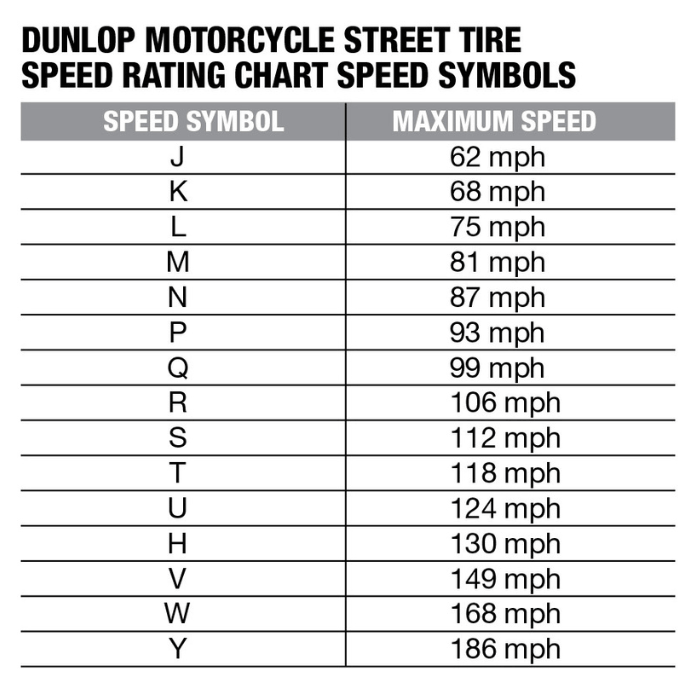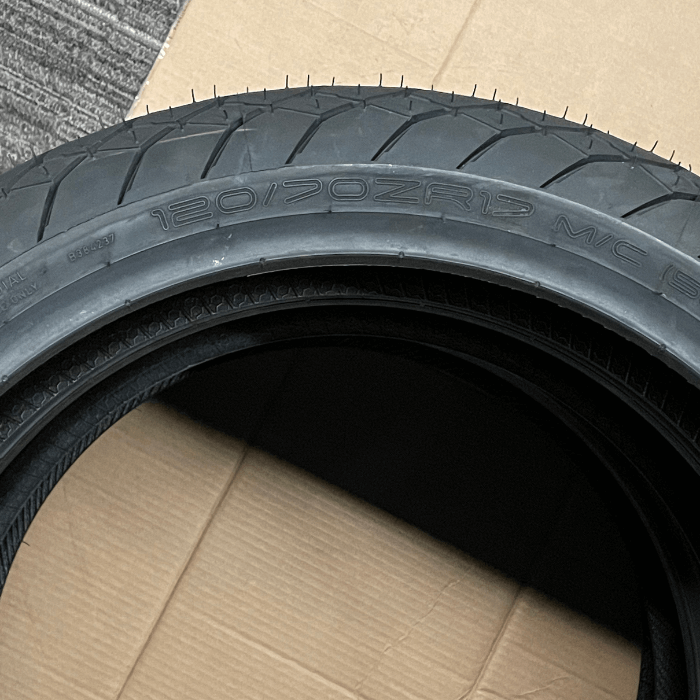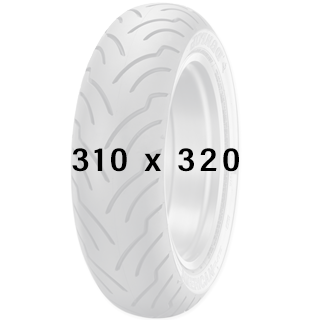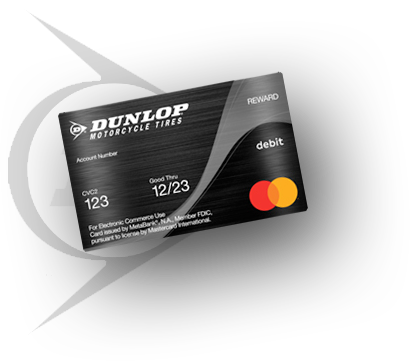Tire Speed Rating For On and Off-Road Motorcycles
Whether for on or off-road use, each motorcycle tire has a speed rating. Regulators classify tires according to this rating, which states the maximum speed at which the tire can perform for a significant time. This classification helps match the correct tire with the motorcycle’s performance.
The speed rating for on and off-road tires is a significant consideration. Yet, it’s only part of the story. All motorcycle manufacturers give specific tire information based on a set formula.
This formula includes the Gross Vehicle Weight (GVWR Rating). This rating considers the motorcycle’s wet weight, the rider and pillion weight, plus accessories. These figures combined must be less than the bike’s GVWR.
Motorcycle manufacturers remove the speed rating guesswork. They do this by naming a specific tire size and rating for each motorcycle they produce. But, if you have replaced the original wheels or rims, it’s necessary to understand all the tire information.
For more information, check out our tire code guide here. (Link here to a previous article)
You will find the tire’s speed rating embossed on each sidewall along with any other essential specifications. You can see ratings expressed as one or two letters. These correspond to a maximum speed capacity.
Speed ratings are determined by the tire’s capacity for heat and speed. Tires that handle high speeds may not be suitable for high load capacities or comfort.. Some tires are more suitable for off-road where vehicles rarely see high speeds. The construction may also make it more optimal for crawling on dirt than spinning at top speed. If you were to equip your motorcycle with tires that have inadequate speed ratings for your bike, it can lead to several safety issues.
A motorcycle tire speed rating chart looks like this:

You will notice that as the alphabet progresses, the maximum speed increases. The exception to this rule is the “H” rating of 130 mph. Due to changes in the rating system over the years, “H” maintained its position in the chart despite other numbers shifting around it. Another exception is the Z rating. On Dunlop Motorcycle Tires, the Z rating is rated for 149+ MPH and is usually indicated in the tire size code. 180/55ZR17
Tires with higher tire speed ratings typically handle heat better. This fact is because the friction caused by a rapidly rotating tire generates a lot of heat. So it makes sense that the higher the speed rating, the better the tire’s heat dissipation qualities.
It’s not quite as simple as it first sounds, as tires have to reach a specific temperature to work at an optimum level. Excessive heat build-up, however, will cause the tires to deform or lose tread. This consideration is one of many and a testament to the technical skill of the tire manufacturer.
Speed Ratings are a Guideline
It is important to understand that speed ratings act as an overall guideline. Tire testing takes place within a lab environment and under controlled conditions so your real-world performance may vary.
The motorcycle tire is mounted to a wheel, inflated to the correct pressure, and bolted to a testing machine in a room heated to 77 degrees Fahrenheit. Force is applied to the tire to simulate the motorcycle’s weight.
The tire then rotates to within 40 kph below the target rating speed for 10 minutes. After that, the speed increases in 10-minute increments until the target rating speed is reached. The tire then rotates at the target speed for another 10 minutes.
With the testing complete, the tire is taken from the test rig and inspected for any signs of damage.
The critical takeaway from this information is that speed ratings for on and off-road motorcycle tires are a guideline only. This figure is an indicator of the tire’s performance, not the motorcycle’s. On the road, there are so many factors that can affect the tire’s performance that the rider must take overall responsibility when choosing and operating tires. Riders should also note that their tires’ speed ratings don’t mean they can’t exceed that speed rating, only that they can safely maintain those speeds for an extended period of time.
Factors that Impact Speed Ratings

An overinflated tire on a touring motorcycle that exceeds its GVWR may experience weaving before reaching its tire’s listed speed rating.
Reducing the tire pressure on an off-road bike to achieve more grip is common. However, head out on the highway without ‘airing up,’ and you will also experience significant steering difficulties before reaching the speed rating. The low pressure will create significant stress and heat on the tire which would destroy it.
Whether for on or off-road use, by-design motorcycle tires come in pairs. The tread patterns, load ratings, and speed ratings work in tandem to give optimum performance. So it makes sense that if you have to replace one tire with a new one, it should match the existing tire. Having a matching set of tires ensures that your front and rear grip is balanced for maximum performance and safety.
A friendly reminder is that these tests are performed on brand new tires. Overly worn or damaged tires can greatly affect the speed rating your tires are capable of.
If you do have to replace a tire with a lower speed rating, always use the lower speed rating as a guide. Tire speed ratings for both on and off-road motorcycles center around a theoretical understanding of real-life situations and factors.
These guidelines for motorcycle use cannot account for all performance-affecting variables. Therefore, the final decision to consider or disregard the relevant tire speed rating guidelines and factors is up to you, the rider.
Do you have any questions about tire speed ratings for motorcycle tires? Then click here to locate your nearest Dunlop Motorcycle Tire expert.










